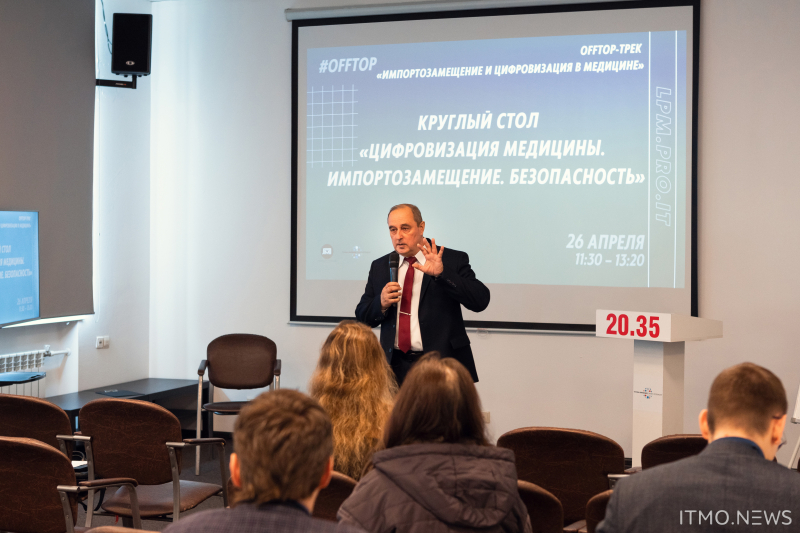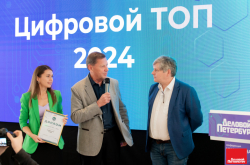Information technologies have long become a key element of medicine. With their help, patients can receive consultations online and make appointments remotely. Medical specialists, meanwhile, use various modern equipment for research and surgery, as well as digital services for remote education. But today, foreign companies that once provided equipment and services are leaving the Russian market; domestic businesses and doctors are faced with the task of coming up with new solutions.
“The integration of IT into medicine poses infosecurity challenges of a completely new level of complexity and importance. After all, we’re talking about the interaction of technologies with living people. We must be able to ensure absolute stability and safety in real time while taking into account every avenue available to attackers,” says Danil Zakoldaev, the head of the Faculty of Secure Information Technologies.
Participants of the roundtable discussion focused on six key topics:
-
Digital medical data – its properties and specifics, as well as how it can be categorized and securely received, processed, stored, and transferred within medical organizations;
-
Medical information systems (MIS) – their premise, capabilities, the challenges of merging existing MIS and the accessibility of such systems for patients and doctors;
-
Development of a medical Internet of Things – here, the experts touched on the issues related to the development of digitally-controlled medical devices, the existing technologies, and the need for imports substitution and certification;
-
Trends in medical IT – the development of robotic surgery, the use of augmented reality technologies, and more;
-
Threats to information and functional security in medical IT – how to react to cyberattacks and deal with errors, downtime, and other risks;
-
From patient to doctor – how medical organizations interact with clients and which difficulties and peculiarities arise during communication between them.
Discussion on each subject involved medical specialists and representatives of major companies and startups. As emphasized by Marina Shutova, a staff member of the Faculty of Secure Information Technologies and a member of the event’s organizing team, this line-up made the roundtable an opportunity to hear a diversity of opinions.
“Most events dedicated to the digitalization of medicine involve developers, government officials, and representatives of various committees, but there are almost never any medical specialists there. And if we look at the problems associated with digitalization, we’ll see that the proposed solutions don’t account for doctors’ daily routines. We see that without their help, any initiative will be difficult to get off the ground, and that is why we invited doctors to join our discussion today,” she comments.
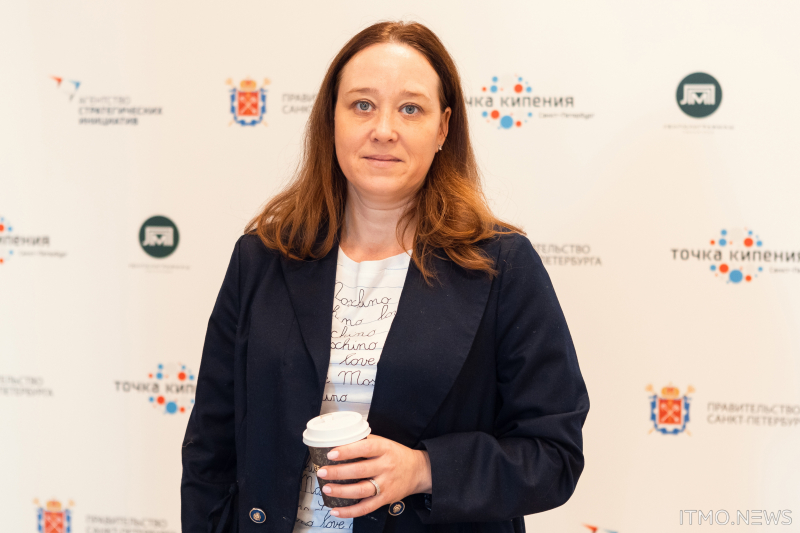
Marina Shutova. Credit: Dmitry Grigoryev, ITMO.NEWS.
Data breadcrumbs
Medical data includes information about patients, such as their medical history, test results, and personal info. There are several things to note about such data. First of all, it’s heterogeneous – the information may be stored as charts or as raw text. Secondly, much of it needs to be stored long-term so that it can be referred to later. And lastly, there are legal aspects related to its secure storage and access.
In order to meet all requirements related to data processing, medical institutions use a variety of medical information systems. Earlier versions of such systems were used to maintain patient records, file appointments, and store financial reports. But today’s systems go as far as manage the entire hospital and even help staff interact with government, insurance, and social services. But how can doctors make the right diagnoses when patients attend several hospitals, each with its own system? Alexey Grinev, a surgeon at the Kirov Military Medical Academy, and Olga Konovalova, the head of cardiology at a St. Petersburg-based consultation and diagnostics center for children, believe that there is a need for a unified, nation-wide healthcare information system that would store all such data.
ITMO University can offer a solution to the problem: digital twins for patients. It combines a database (containing test results, general information, and so on) with mathematical models that reflect the patient’s state and can predict diagnoses and treatments. Medical institutions can use digital twins to share information with each other; doctors – to monitor their patients’ health; and patients – to observe the course of their treatment and their test results as interpreted by doctors. But, according to Viktoriia Korzhuk, an associate professor at the Faculty of Secure Information Technologies, one of the key goals of machine learning that is yet to be solved deals with the verification and validation of information systems. In other words, IT specialists need to understand in which cases digital twins will produce incorrect diagnoses. Another future task is to develop a system that would combine different MIS into one, as well as supplementary software that would forecast and provide preliminary diagnoses. Specialists will also need to create approaches to the collection and analysis of data about dangerous diseases.
“In addition to digital twins, our researchers at ITMO are also testing and developing devices for the medical Internet of Things. In collaboration with one of our partner medical institutions, we’ve developed software that remotely transmits data to the computers of doctors and administrators. Right now, we’re working on the system’s security features and communication methods. One factor involved in that is functional security – the system must not harm its users. Another project of ours is a platform for remote medical assistance that would allow specialists from different parts of Russia to consult each other. As part of that platform, we’re also developing an AR surgery system,” comments Viktoriia Korzhuk.
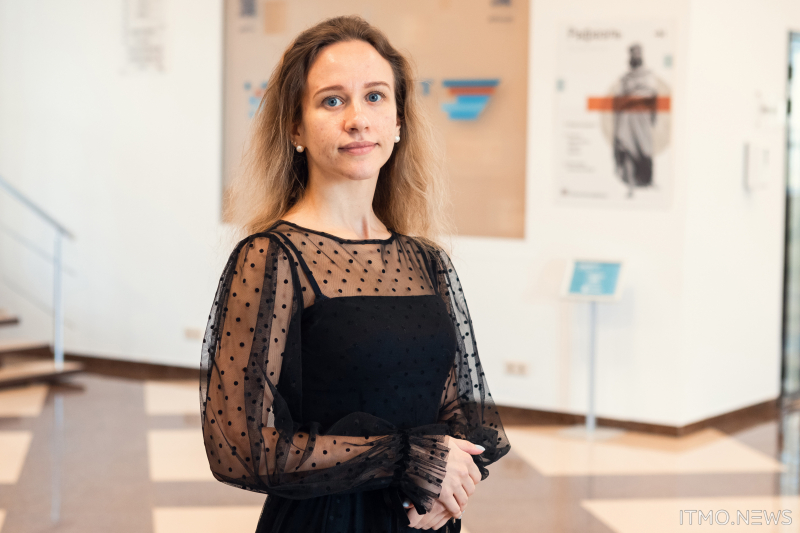
Viktoriia Korzhuk. Credit: Dmitry Grigoryev, ITMO.NEWS.
Navigating the web
Both doctors and patients actively use the internet as a means to find information required for diagnostics and treatment, as well as to communicate, hold online consultations, and describe their symptoms anonymously. However, modern technologies can oftentimes bring harm, as was highlighted by Alexander Eikhgorn, the head of gynecology department at Omsk City Hospital No.8. For example, people without a background in medicine can diagnose themselves incorrectly or start arguing with their doctor after learning untrustworthy information on the web. Patients can receive an online consultation from specialists worldwide, but what if different doctors reach different conclusions? Plus, there’s a constant information security concern. Each consultation results in a digital medical history record that has to be protected from being accessed by third parties, including IT specialists who process this data.
Marina Shutova thinks so, as well. The specialist shared data from the Russian Public Opinion Research Center, according to which 50% of Russians under the age of 44 don’t trust their doctor’s diagnosis and look for additional information on the web. They analyze a variety of sources but can’t always navigate big amounts of data and separate the truth from misinformation. This allows fraudsters to apply social engineering methods to mislead, manipulate, and gain access to private data. As a result, users may waste their time and money, and also harm their health, if they decide, for instance, to use dubious medical products. Non-specialists can’t assess the quality of treatment without a special background, so instead they focus on a medical institution’s popularity, the personal features of a doctor, and the quality of service (conditions, wait time, politeness of staff, etc.) and make their decisions on where to undergo treatment based on these factors.
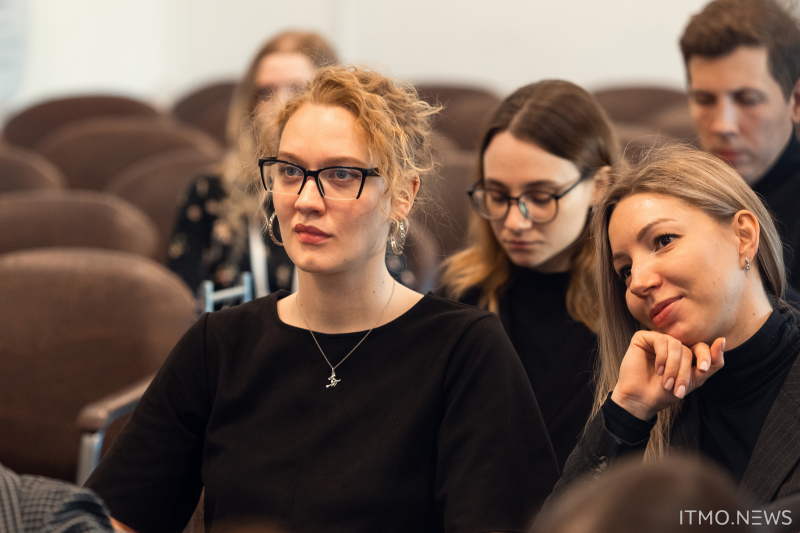
Credit: Dmitry Grigoryev, ITMO.NEWS.
Unified database
Doctors also face problems related to the recording and storage of data. For example, Vladimir Malkov, the head of endoscopy department at the Pirogov Clinic of High Medical Technologies, shared that his department records around six terabytes of HD video every two months. The high quality is a must for precise diagnostics and surgeries: for instance, it allows doctors to zoom in on a tiny polyp and make it appear 80 times larger during gastroscopy or colonoscopy. Moreover, HQ images can be further used for studies and AI training, but suitable equipment is expensive and long-term storage of recorded materials requires the creation of a national video data bank.
Nikolai Morozov, the head of the company Mediana, agrees with these statements. Endoscopy helps doctors screen mucous membranes without invasive surgery, but it must be done extremely carefully. That’s why it’s important to provide specialists with modern equipment that allows them to process, record, and store audio and video data in cloud storage. Plus, some endoscopy tools made in Russia don’t have the recording function, while their international counterparts aren’t certified for use on the Russian market.
“Russian manufacturers need top-quality electronic components. When it comes to the production of electronic systems, Israel and China are in the lead. Put simply, Russian companies are good at assembling the optical, instrumental, and body parts of endoscopes, but we lack medical monitors for visualization and electronic chips for video signal detection, as well as touchscreen displays,” says the expert.
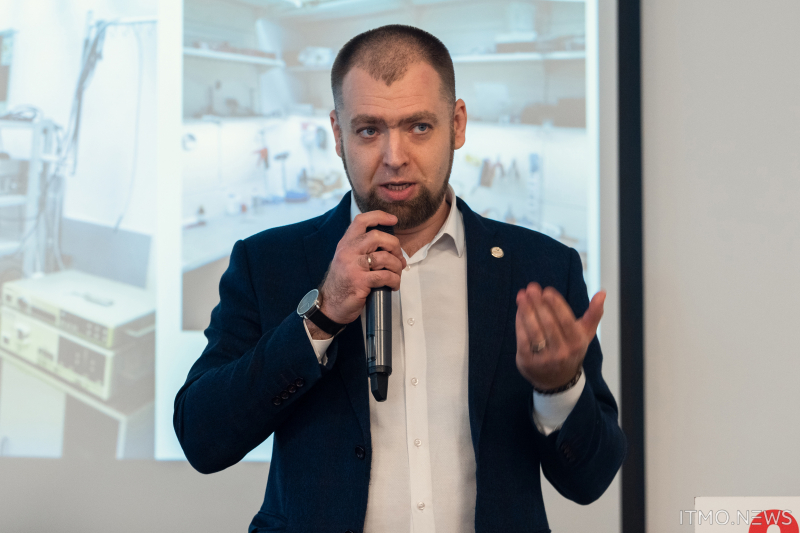
Nikolai Morozov. Credit: Dmitry Grigoryev, ITMO.NEWS.
Business solutions for medicine
Modern information technologies are often of help to doctors and broaden the horizons of diagnostics and treatment. For instance, doctor Valery Rumyantsev uses AR technologies during pelvic evisceration (the removal of all organs from a person’s lesser pelvis) at the Kirov Military Medical Academy. At first, specialists embed shafts into the patient’s iliac horn and mark them so that the doctor’s AR headset would use them for alignment. Then, a multispiral computed tomography (CT) and angiography of the lesser pelvis are conducted. Based on the received results, the medical team jointly with IT specialists design a 3D model of the pelvis and nearby organs to create the full picture of the patient’s condition. During the surgery, one of the doctors puts on the AR headset with a hologram based on this 3D model and performs the surgery. In real time, the hologram aligns with marked shafts and the surgeon sees the actual body of the patient, including organs and bones, in augmented reality.
The company Neiromed helps develop digital solutions related to machine learning and computer vision, says Denis Belsky, its executive director and the head of the NeuroMark project. According to him, Neiromed’s digital platform Neuro Nets allows doctors to segment glial brain tumors using MRI, lung damage and tumors caused by COVID pneumonia using CT, and nephrons using histological analysis. This tool will also help plan surgeries, while DICOM Viewer, the standard software for working with medical images, only allows users to measure the affected areas using a ruler and protractor.
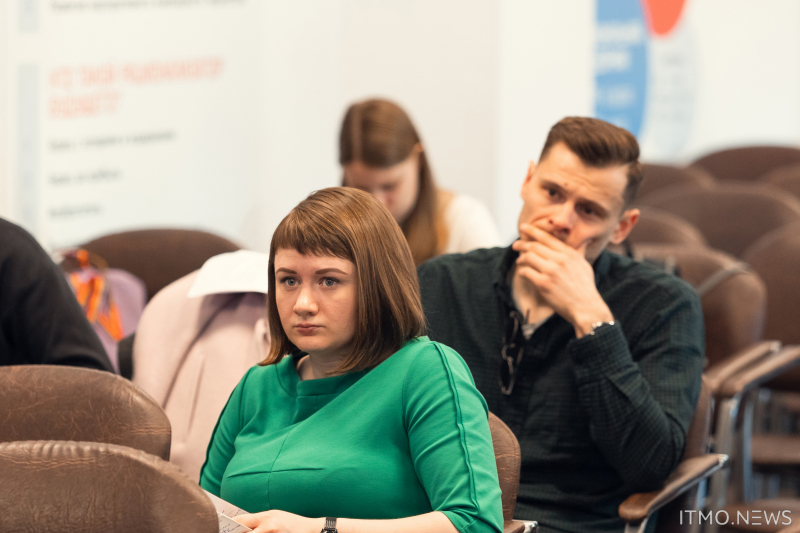
Credit: Dmitry Grigoryev, ITMO.NEWS.
As for another digital project of the company, NeuroMark, it will allow any specialist to train an AI model to analyze MRI, CT, and histological analysis images. This will allow doctors to automate one of the diagnostic stages.
Marina Letunovskaya, the official representative of Israel-based company Appletech in Russia, presented the TytoCare Medical Exam Kit – a medical tool for remote examination of patients. It includes a digital stethoscope, otoscope, tongue depressor, and infrared thermometer. The kit was commissioned for the TytoCare startup but it can also be reproduced for Russian companies.
“Of course, we want medicine to develop not only in terms of import substitution, as this basically means copying, but also in terms of creating brand-new technologies and establishing a domestic medical market that would outshine that of other countries. For that, we need to create independently, think critically, and learn to promote our devices and technologies on both the Russian and the global markets,” says Igor Myalkovsky, the event’s moderator and manager for interaction with higher education institutions and industry training centers at the company ETM.

Igor Myalkovsky. Credit: Dmitry Grigoryev, ITMO.NEWS.
